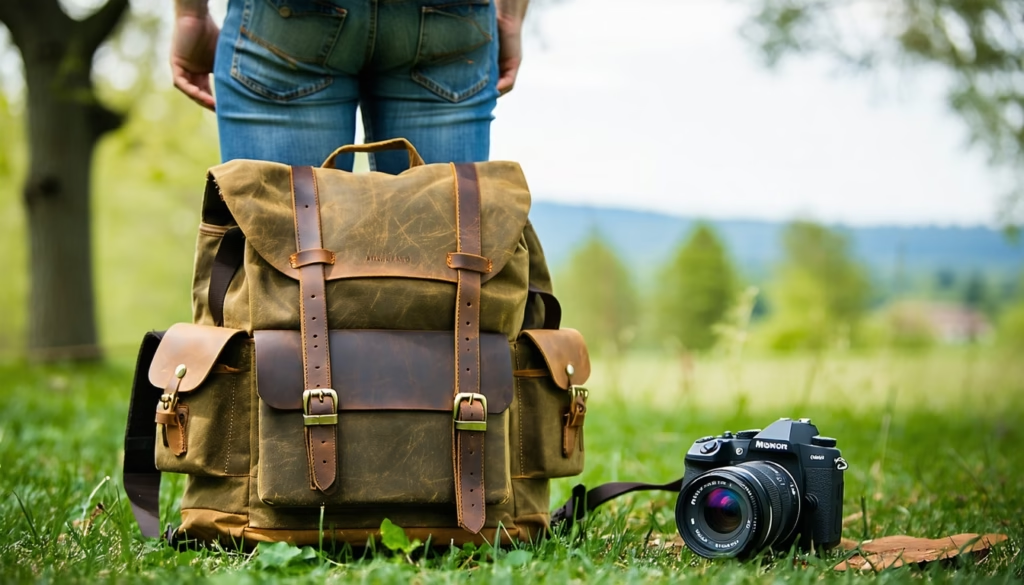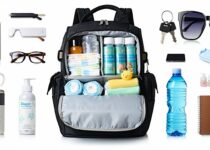How To Choose The Right Strap Style For A Comfortable Weekender Backpack

If you’ve ever felt the pinch of poorly designed shoulder straps on a long trip, you know that choosing the right set of weekender backpack straps can make all the difference in your comfort and enjoyment. From foam density to strap shape, every detail affects how the load feels on your shoulders and back.
Beyond just looks and storage capacity, the strap setup defines how far we can roam before fatigue sets in. A strap that digs in on day two isn’t doing its job plain and simple.
In this guide, we’ll walk you through assessing our travel habits, exploring strap shapes, comparing padding, checking adjustability, testing materials, and maintaining strap performance. Let’s dive in so you can hit the road with confidence and comfort.
Assess Your Travel Needs
Before we dive into strap specs, let’s pinpoint how and where we travel. Are we hopping on a quick weekend flight or trekking dusty trails? Matching strap style to trip profile prevents surprises (and sore shoulders) down the road.
Trip Duration and Load
The length of our getaways often dictates how much we pack—and how robust our straps must be.
-
Short Stints (1–2 days)
Light loads under 10 pounds, simple straight straps work fine. -
Weekend Escapes (2–3 days)
Expect 10–20 pounds of gear. Contoured straps with moderate padding keep things comfy. -
Extended Getaways (4+ days)
Over 20 pounds once you include shoes and toiletries. Ergonomic straps with load lifters or a waist belt help balance heavy loads.
Activity and Terrain
Where we roam shapes strap requirements. Urban strolls demand less support than off-road adventures.
-
City Sightseeing
Lean toward slimmer straps—ventilated padding is a plus if we race between museums. -
Light Hiking
Contoured padding and a sternum strap (the one that clips across your chest) add stability on uneven ground. -
Commuter Meets & Cafés
Sleek straps that tuck under a blazer? Yes please. For tips on bags that transition from office to getaway, see our work-to-weekend backpack guide.
Travel Frequency
How often we hit the road also matters. Frequent flyers might splurge on premium straps that pay off trip after trip, while occasional adventurers can opt for simpler designs.
Explore Strap Designs
Wondering which strap shape suits you best? Strap geometry affects how weight spreads across your shoulders, so let’s break down common styles in a quick comparison.
| Strap Type | Description | Ideal For |
|---|---|---|
| Straight Shoulder Straps | Flat webbing, minimal curve | Light loads, short hauls |
| Contoured Shoulder Straps | Ergonomic curve follows shoulder line | Moderate loads, long wear |
| Padded Shoulder Straps | Extra foam thickness | Heavy gear, maximum comfort |
| Mesh-Covered Straps | Breathable mesh overlay | Warm climates, sweaty treks |
| Load Lifter Straps | Top straps that pull bag closer to torso | Heavy loads, better balance |
| Sternum Straps | Cross-chest clip for stability | Uneven terrain, active travel |
Contoured straps sit closer to your body and resist slipping. Padded straps feel like a soft hug around your shoulders—but they add weight. Mesh coverings wick sweat, a lifesaver during hot-weather getaways.
Compare Padding Options
Concerned about soreness on long hauls? Let’s break down what to look for in strap cushioning.
-
High-Density Foam
Maintains shape under heavy loads without flattening over time. -
Open-Cell Foam
Feels softer but may compress faster, ideal for lighter packs. -
Molded Foam Channels
Cutouts improve airflow and reduce sweaty hotspots. -
Gel Inserts
Provide extra pressure relief but often increase strap bulk.
Padding Thickness vs Weight
Thicker cushions feel like clouds—but every ounce counts. Aim for 1/2–3/4 inch thickness on a weekender pack. That balance keeps straps plush without turning your bag into a weightlifter’s barbell.
Ventilation Features
If you travel to warm destinations, mesh-lined straps or cutouts are game changers. They let heat escape instead of trapping it against your skin.
Check Adjustability Features
Need a custom fit? Straps that adapt to our body shape and load changes make every mile easier.
Length Adjustment
Look for easy-to-reach sliders that let you lengthen or shorten straps on the fly. Smooth buckles save you from wrestling with stuck webbing mid-journey.
Load Lifter Straps
These small straps attach near the top of the bag and angle toward your neck. By pulling the pack inward, they shift weight off your shoulders and onto your hips—ideal when we pack over 15 pounds.
Sternum Straps
A sternum strap clips across the chest to stabilize shoulder straps and prevent slippage. If you often carry a camera or laptop, a chest clip keeps the load secure. We’ve reviewed top sternum strap backpacks if you want more in-depth tips on this feature.
Test Strap Materials
Curious about which materials hold up best? Strap durability and comfort start at the fabric level.
-
Nylon Webbing
Lightweight, water-resistant, and abrasion-proof. A travel staple. -
Polyester Webbing
Slightly heavier than nylon but excels at UV resistance and colorfastness. -
Canvas Overlay
Offers vintage style, though it soaks up water and takes longer to dry. -
Leather Accents
Dressier look, yet adds weight and requires extra care.
Material vs Comfort
Webbing that rubs or chafes quickly becomes a nuisance. Look for soft-edge finishes or reinforced stitching to prevent digging into your shoulders. If your pack lists “nylon webbing” in the specs, you’re on the right track.
Maintain Strap Performance
Want your straps to last trip after trip? A little upkeep goes a long way.
-
Spot Clean Straps
Use mild soap and a damp cloth to remove grime after dusty hikes. -
Hand Wash Gently
Fill a sink with warm water, scrub softly, then rinse thoroughly. -
Air Dry Upright
Let straps hang free so they keep their shape—avoid direct sun to prevent fading.
After cleaning, inspect webbing for frays and buckles for cracks. Store your pack in a cool, dry spot—never compressed under heavy items. For step-by-step cleaning tips, see our cleaning weekender backpack guide.
Frequently Asked Questions
What Makes Weekender Backpack Straps Different from Hiking Straps?
Weekender straps focus on comfort for moderate loads, with slimmer profiles and basic padding. Hiking packs add more contour, mesh ventilation, and load-lifter systems for extended treks.
How Tight Should I Wear My Shoulder Straps?
Aim for a snug fit that keeps the bag close to your body without pinching. You should be able to slide a flat hand between your shoulder and strap.
Are Sternum Straps Necessary for Light Loads?
Not always, but a sternum clip can stop straps from slipping if you walk quickly or carry a mix of items. It’s an easy upgrade for added stability.
Can I Replace the Straps on My Current Backpack?
Many backpacks feature removable straps. Check the manufacturer’s site or a local repair shop—swapping to a new set can refresh an old pack.
Do Padded Straps Add a Lot of Weight?
High-density foam adds only a few ounces but can drastically improve comfort. If you’re watching weight, look for thinner padding with molded channels.
How Often Should I Clean My Backpack Straps?
Spot-clean after muddy or sandy trips, and give them a full hand wash every few months or when they smell musty.
Will a Waist Belt Improve Comfort on a Weekender Backpack?
If you routinely pack over 15 pounds, a removable waist belt shifts weight to your hips and eases shoulder strain. It’s a welcome feature on heavier weekend loads.
Final Thoughts
Choosing the right straps boils down to understanding how you travel and testing what feels best on your shoulders. By assessing trip duration, exploring different shapes, comparing padding, checking adjustability, and knowing how to upkeep your setup, you’ll land on a strap style that keeps you comfortable mile after mile.
Next time we pack our weekender backpack, let’s pay as much attention to the straps as we do to our outfits. Your shoulders will thank you.


